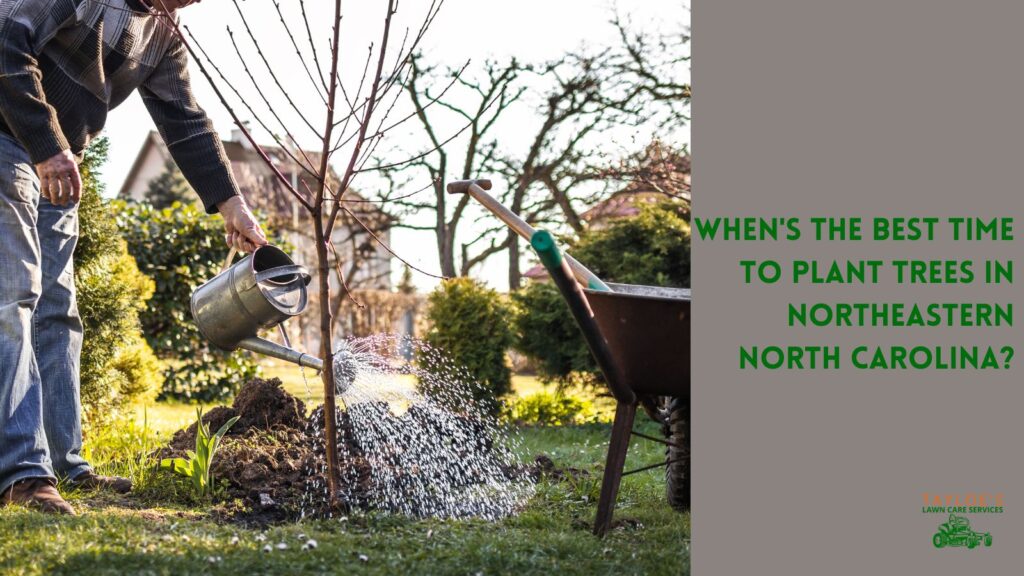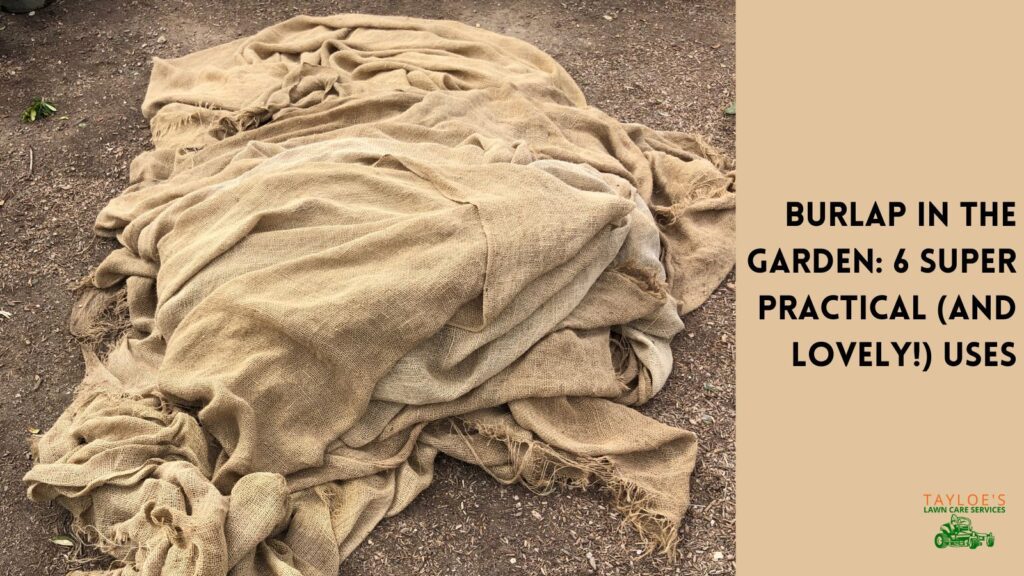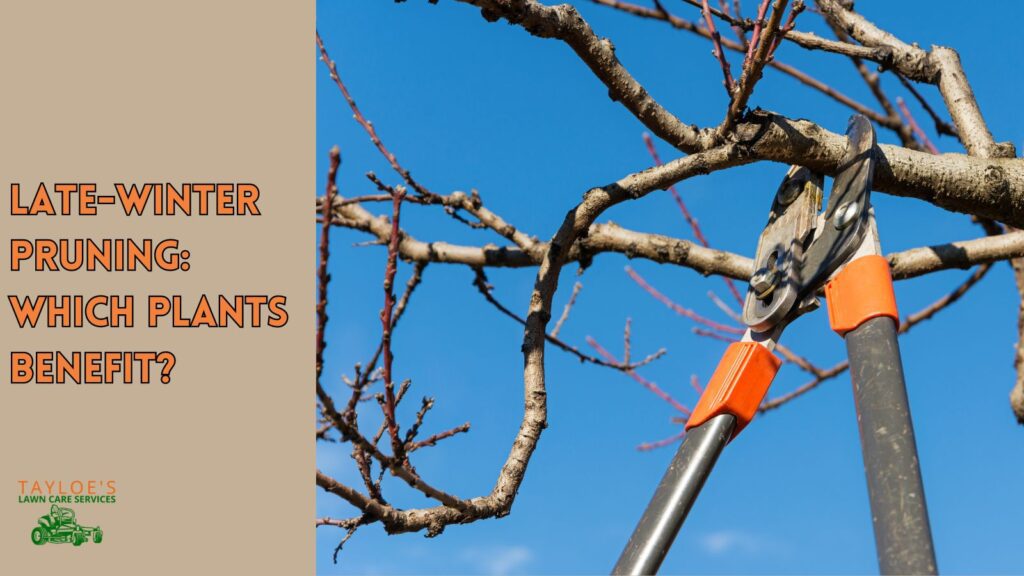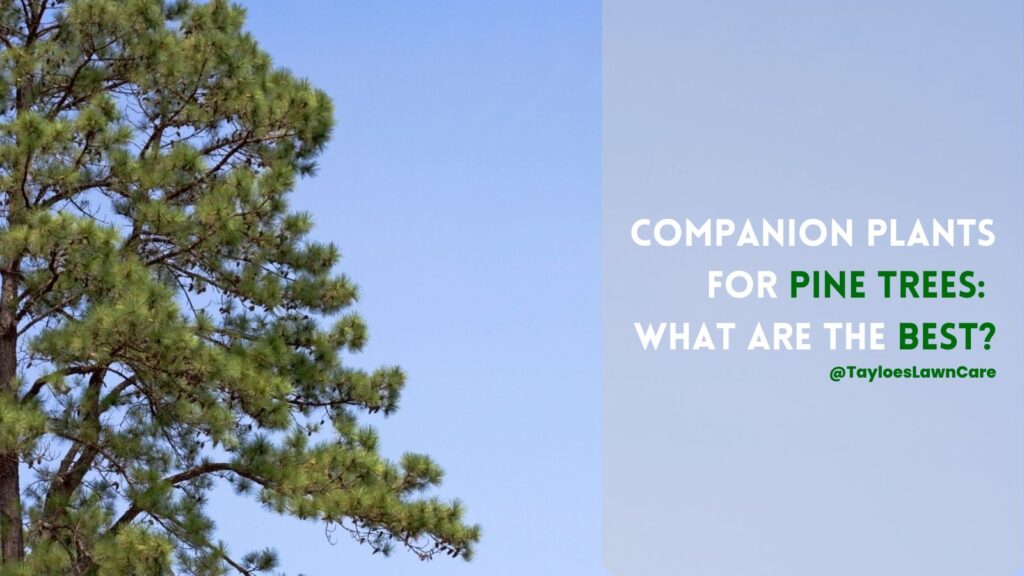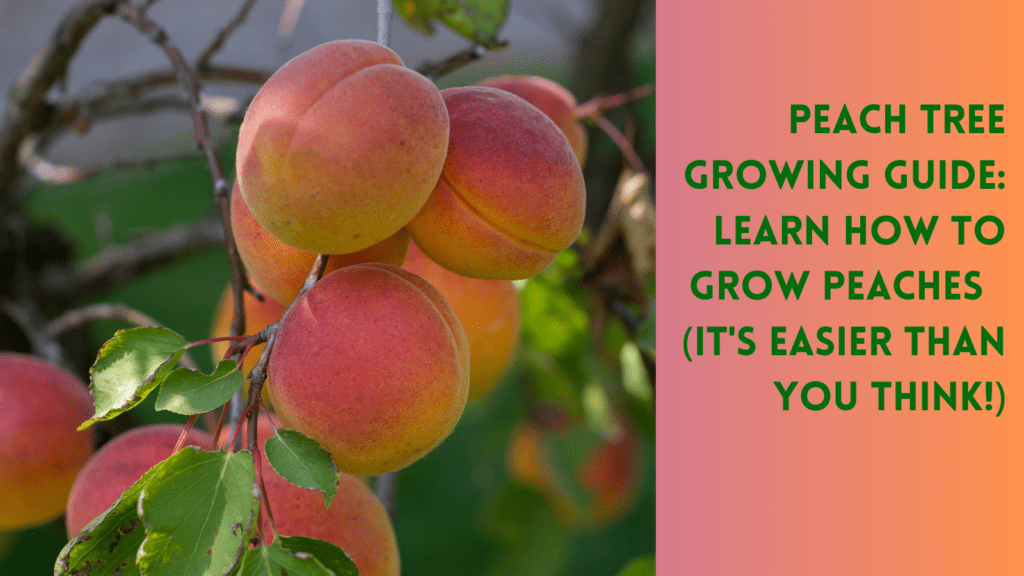Last Updated on: 9th February 2025, 07:55 am
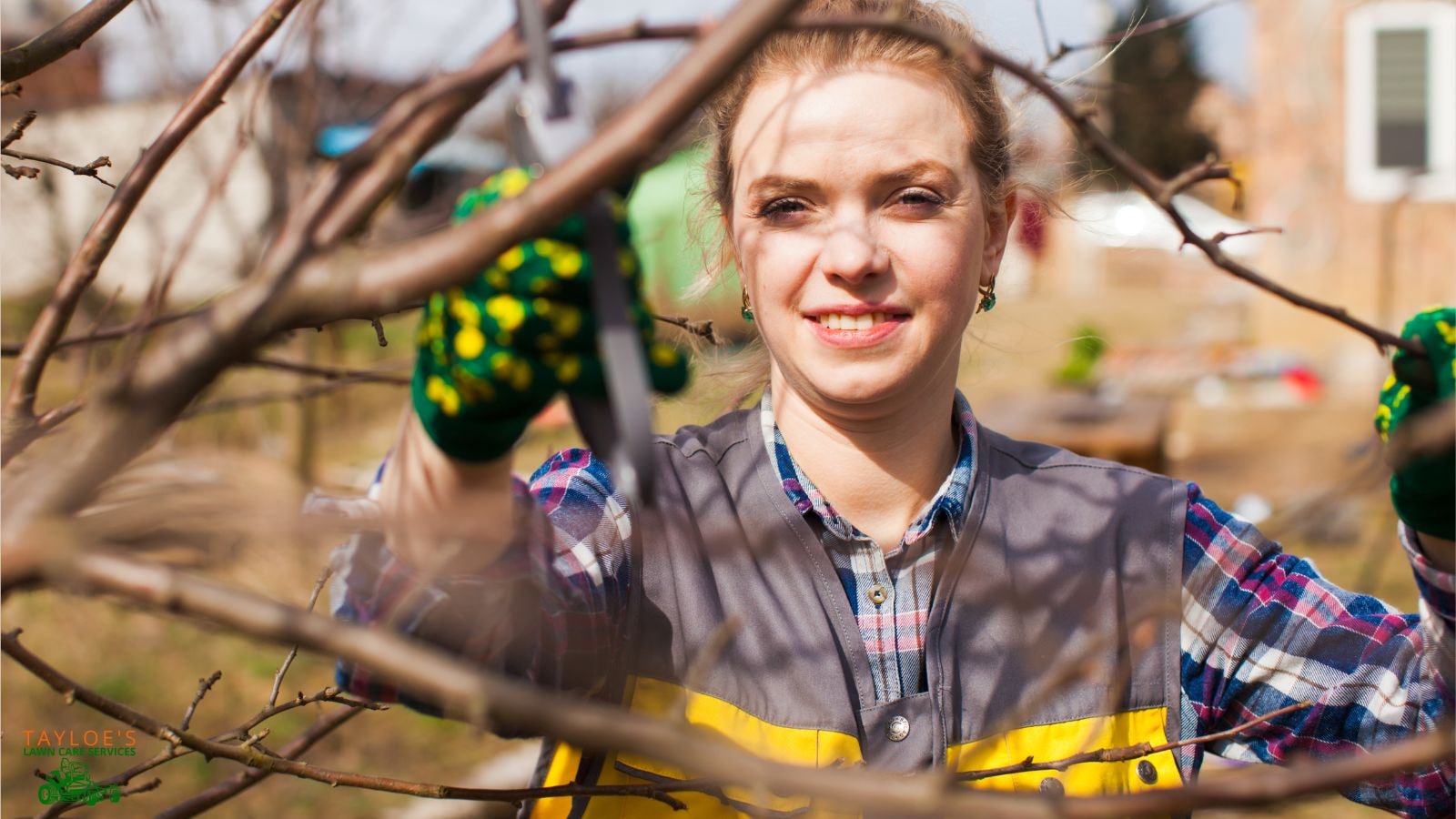
Why you should tend your trees and shrubs from late fall to early spring
As the leaves start to turn and the weather cools down, it’s the perfect time to focus on your shrubs. Fall is not just about raking leaves; it’s essential for preparing your trees and shrubs for the upcoming winter.
This article will explain why giving shrubs the attention they need to thrive is best from fall through late winter or before active growth begins in spring. Later, we’ll talk about proper techniques when you prune your shrubbery.
Fertilizing Trees and Shrubs from Late Fall to Early Spring
Fall to just before spring is ideal for fertilizing trees and shrubs. During this period, plants transition into dormancy, which means they can absorb nutrients without the stress of active growth. Fall fertilization ensures your shrubs have enough nutrients when they awaken in spring.
Using Slow-Release Fertilizer for Healthy Growth
Fertilizing your shrubs in early fall is a key step in preparing them for winter. Slow-release fertilizers are especially effective because they provide a steady supply of nutrients over time, which is crucial for sustained growth.
Using a slow-release granular fertilizer or liquid fertilizers ensures your shrubs receive a balanced diet of essential nutrients like nitrogen, phosphorus, and potassium.
This balance promotes foliage growth, strengthens roots, and improves overall plant health. Deep root feeding, which delivers nutrients directly to the root zone, can especially benefit established trees and shrubbery.
Applying fertilizer according to the label is key. If you over-apply fertilizer, it can lead to excess nutrients and cause excess growth.
Assessing Your Shrubs’ Health
Before you jump into fall care, assess shrub health. Look for signs of stress in your landscape plants, such as discolored leaves, dead or dry branch tips, or unusual growth patterns.
Pruning Overgrown Shrubs for Health and Shape
Pruning is more than just trimming back overgrowth; it’s a way to shape your shrubs and promote vigorous new growth. Late fall is an excellent time to prune because it minimizes stress on the plants and prepares them for winter.
The Importance of Pruning in Fall
Pruning in late fall reduces the risk of damage from winter weather. Cutting back overgrown branches can prevent them from snapping under the weight of snow or ice. Additionally, pruning dead or diseased branches helps prevent the spread of disease.
Pruning Shrub Roses and Flowering Shrubs
Shrub roses and other flowering shrubs benefit greatly from fall pruning. By cutting back old blooms and leggy growth, you encourage new shoots to develop, leading to a more robust bloom in the spring. Proper pruning also helps maintain the shape and overall health of your shrubs.
Protecting Your Shrubs from Winter Damage
Winter can be tough on shrubs if not adequately protected. Taking a few precautionary steps in the fall can help your shrubs withstand the cold and come out strong in the spring.
Mulching and Covering Shrubs
A layer of mulch or straw around the base of your shrubs can insulate the roots and help retain moisture. Use burlap or other coverings to shield your shrubs from harsh winds and freezing temperatures. Be cautious with high-nitrogen fertilizers in the fall, as they can encourage new foliage growth that won’t have time to harden off before winter.
Regular Watering
Even as the weather cools, it’s important to keep watering your shrubs regularly. Moist soil is crucial for root health. Ensuring your shrubs are well-watered before winter can improve their survival and growth.
Common Challenges and Solutions
Shrubs can face various challenges, from pests to nutrient deficiencies. Proper care and maintenance are essential to keeping these issues in check.
Addressing Pests and Diseases
It is important to monitor your shrubs for signs of stress, such as unusual leaf color or holes in the leaves. If you spot an issue, act promptly. Integrating pest management techniques can help you control pests while minimizing harm to beneficial insects and the environment. Natural fertilizers and pest control options are available for those who prefer organic methods to maintain a healthy landscape.
Timing and Frequency of Shrub Care
Timing is everything when it comes to shrub care. Knowing when to prune, fertilize, and water can significantly improve the health and appearance of your shrubs.
Seasonal Care Schedule
As mentioned, late autumn until the first days of spring are the best times for pruning, while early fall is ideal for fertilizing. Regular watering throughout the growing season keeps the soil moist and promotes healthy root development. By following a consistent care schedule, you can ensure your shrubs remain vibrant and resilient.
Tools and Techniques for Effective Shrub Care
The right tools and techniques can make all the difference in shrub care. Whether pruning or fertilizing, using the correct approach ensures your plants are healthy and aesthetically pleasing.
Care for Different Types of Shrubs
Different plants have different needs; understanding these differences is key to providing the best care.
Tailoring Care to Specific Plants
For example, rose bushes, evergreens, and deciduous shrubs each require unique pruning and fertilizing strategies. Roses benefit from regular pruning to encourage blooming, while evergreens may need protection from winter burn. Deciduous shrubs often require less pruning but benefit from late fall tree care and fertilization.
How to Prune Ornamental Trees and Shrubs
Renewal pruning is an essential practice that enhances the aesthetic appeal of ornamental trees and shrubs and promotes health and longevity. While the basic principles of pruning apply to all ornamental trees and shrubs, different species and situations may require specific techniques. Here’s how to prune your ornamental trees and shrubs effectively.
Understanding the Basics of Pruning
Pruning is essentially the act of selectively removing branches, stems, or roots to improve a plant’s overall health and appearance. The timing and method of pruning can vary depending on the type of plant and its specific needs, but the goal is always the same: to maintain the plant’s structure, encourage healthy growth, and remove any dead or diseased parts.
When to Prune Shrubs and Ornamental Trees
The timing of pruning is crucial to ensure the best results. Late autumn or early spring is ideal for most plants. During these times, the plants are either dormant or just beginning to grow, which reduces stress and minimizes the risk of damage.
Late Fall Pruning for Damage and Disease Resistance: Autumn pruning allows you to remove dead branches that could break under the weight of snow or ice during the winter. It also helps prepare the plant for a burst of new growth in the spring.
Late Winter Renewal Pruning: Pruning in the late winter is beneficial for many flowering shrubs and ornamental trees. Removing weak branches encourages vigorous growth and improves the plant’s flowering potential next spring.
Tools You’ll Need for Taming Overgrown Shrubs
Investing in quality pruning tools, like electric or manual hedge clippers, can help you maintain the shape and health of your shrubs. When loosening the soil surface around your shrubs, use a garden fork or spade to promote healthy root growth.
If applying fall fertilizer while you work, follow the manufacturer’s instructions for applying granular or liquid fertilizer. Remember you want to give a nutrient boost without damage.
Hand Pruners: Ideal for small branches and stems up to ¾ inch in diameter. Hand pruners are perfect for precise cuts and shaping.
Loppers: Loppers provide more leverage for thicker branches and can cut through branches up to 2 inches in diameter.
Pruning Saw: For branches thicker than 2 inches, a pruning saw is the tool of choice. It allows for clean cuts without damaging the plant.
Hedge Trimmer: Hedge trimmers or hedge shears are useful for trimming large areas or hedges. They can also quickly shape shrubs and ornamental trees. You can also invest in gas or electric shears to get the job done.
Gloves and Safety Gear: Protect your hands with sturdy gloves, and consider using safety goggles if you’re dealing with larger branches or using powered tools.
How to Prune Ornamental Trees and Shrubs
Removing the right amount of growth without severe pruning is key when pruning plants. Here’s how to do it:
Start with the Dead and Diseased: Remove any dead, diseased, or damaged branches coming off the main stem; these can harbor pests and diseases.
Thin Out Overcrowded Areas: Cut branches that are crowded. Thin out these areas to improve air circulation and light penetration, which are crucial for healthy growth.
Shape the Shrub: Once the dead and overcrowded branches are removed, focus on shaping the shrub. Cut back any with a long branch spread to maintain a pretty shape. Make your cuts just above a bud, facing the direction you want the new growth to go.
Step Back and Assess: Periodically step back and examine the shrub’s overall shape. This will help you maintain symmetry and avoid over-pruning.
How to Prune Ornamental Trees
Pruning ornamental trees requires more care and precision, as these trees are often focal points in a garden or landscape. Here’s how to prune them effectively:
Identify the Main Branches: Start by identifying the main branches or leaders of the tree. These branches form the tree’s structure and should generally be left intact.
Remove Suckers and Water Sprouts: Suckers (shoots that grow naturally from the base of the tree) and water sprouts (vertical shoots that grow from the trunk or branches) must go. These take energy from the tree and detract from its appearance.
Cut Back Competing Branches: If dense branches compete with the main leaders or cross each other, prune them back. These thinning cuts maintain the tree’s shape and prevent future damage from rubbing new branches.
Focus on Aesthetic Shaping: Ornamental trees often benefit from shaping that enhances their lower branches. Make small, precise cuts to guide the tree’s growth in a way that complements its natural structure.
Be Mindful of Flowering Trees: For ornamental trees that flower in the spring, avoid heavy pruning right before they bloom, as you’ll reduce the number of flowers. Instead, prune them right after they finish flowering.
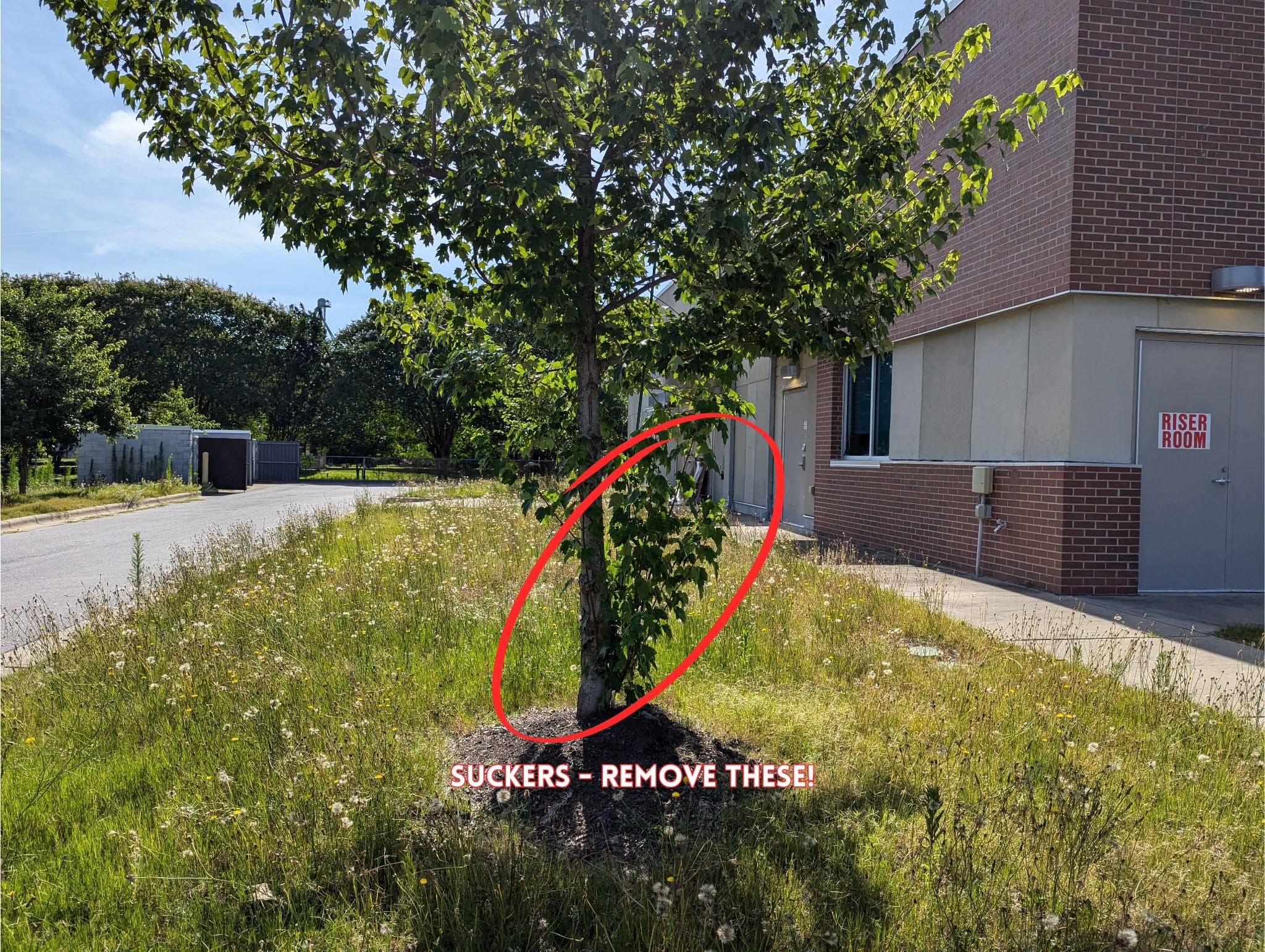
Note that this guidance does not apply to large trees but only to ornamental species.
Proper Pruning Techniques
Use the right techniques to avoid harm no matter what plants you’re pruning. Here are some best practices:
Make Clean Cuts: Always make clean cuts at a slight angle, just above lateral buds or branch. This helps the plant heal more quickly and reduces the risk of disease.
Avoid Over-Pruning: It’s easy to get carried away with pruning, but removing too much growth stresses the plant. As a rule of thumb, never remove more than one-third of the plant’s total growth at one time.
Don’t Leave Stubs: When cutting back branches, make the cut close to the trunk or main branch without leaving a stub. Stubs can be entry points for pests and diseases.
Pruning for Specific Plants
Different plants have unique pruning needs. Here’s a quick guide:
Flowering Shrubs: Prune hydrangeas or lilacs immediately after flowering to encourage next year’s flower buds to set. There are a few exceptions to everything in landscaping, including this rule of fall/winter shrub care.
Evergreens: Prune evergreens lightly in late spring or early summer to maintain shape. Avoid heavy pruning, as deciduous shrubs don’t recover as quickly.
Deciduous Trees: Prune deciduous trees in late autumn or winter when they are dormant. This reduces stress on the tree and allows you to see the branch structure more clearly.
Roses: Prune shrub roses in late winter or early spring before new growth starts. Remove old wood and thin out the center of the plant to improve air circulation.
The Benefits of Regular Pruning
Regular pruning offers numerous benefits beyond just maintaining the shape and appearance of your plants and ornamental trees.
Disease Prevention: Removing dead or diseased wood reduces the risk of disease spreading.
Improved Plant Growth: Pruning encourages new growth and helps the plant focus its energy on active growth.
Enhanced Flowering and Fruit Production: Proper pruning can lead to more abundant flowers and fruit when new growth appears.
Increased Sunlight and Air Circulation: Thinning out dense growth allows more sunlight and air to reach the inner branches. These are especially important health-promoting functions for young trees.
Final Thoughts on Tree and Shrub Fertilization and Care in the Fall
Pruning is both an art and a science. With practice, you’ll develop an eye for what each plant needs. Remember to be patient and take your time—pruning is not a task to rush. With the right approach, tools, and timing, you can keep your yard looking fantastic year-round.
If you need help caring for your lawn or plants, contact Tayloe’s Lawn Care Services, LLC, by phone or text at 252.287.3376. Follow us on Facebook for year-round lawn and gardening tips.
Author Profile

- Randy Tayloe is the COO of Tayloe's Lawn Care Service, LLC. He is a certified custom applicator, recognized by the North Carolina Department of Agriculture Pesticide Division. A native of Bertie County, NC, and graduate of Bertie High School, he wants to beautify his home county - one yard at a time.
Latest entries
 Trees and ShrubsJanuary 13, 2026Repairing your shrubs after frost or ice damage
Trees and ShrubsJanuary 13, 2026Repairing your shrubs after frost or ice damage Lawn CareJanuary 6, 2026Year-round lawn care schedule for NC homeowners
Lawn CareJanuary 6, 2026Year-round lawn care schedule for NC homeowners Lawn CareDecember 29, 2025Benefits of de-icing treatments ahead of winter weather
Lawn CareDecember 29, 2025Benefits of de-icing treatments ahead of winter weather FaunaOctober 3, 2025Fall decorations that endanger wildlife (and how to avoid the risks)
FaunaOctober 3, 2025Fall decorations that endanger wildlife (and how to avoid the risks)

